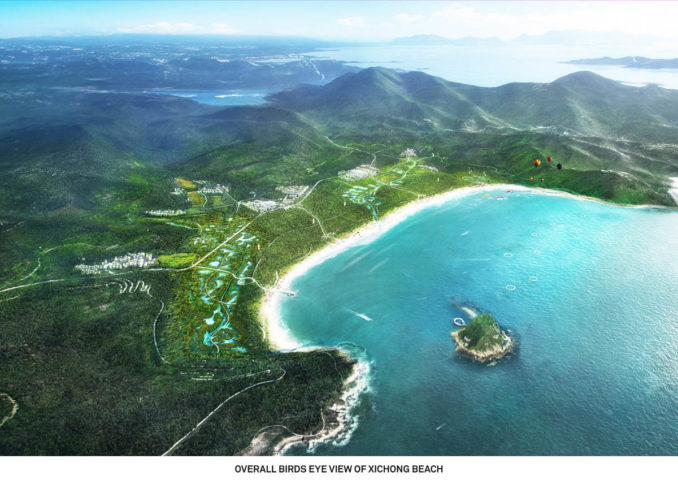
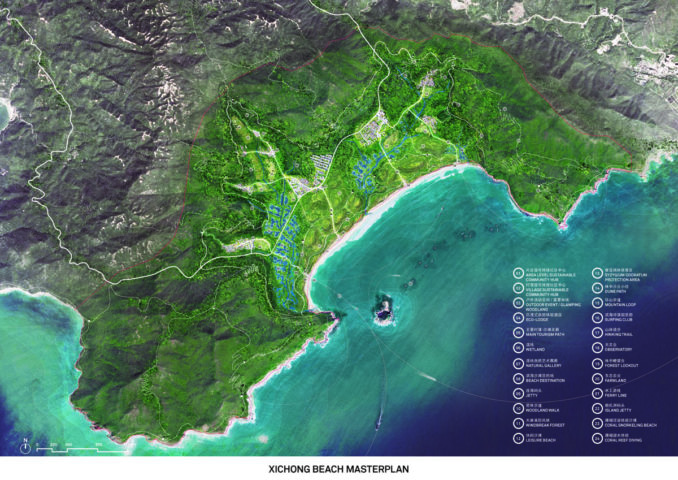

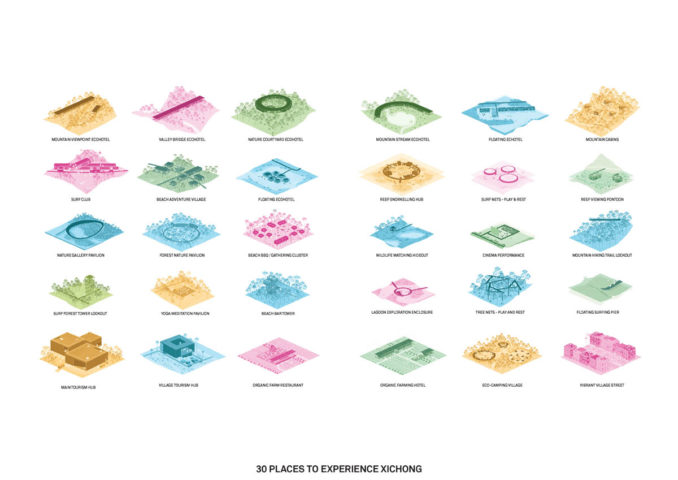
Xichong is one of China’s most beautiful coasts, with sandy beaches and a biodiverse tropical landscape, only a short trip from Shenzhen. In 2018 Typhoon Mangkhut destroyed vast areas of this coastal landscape, along with many buildings. Out of that adversity came an opportunity – for a new beginning and a more sustainable future. New community-driven developments are located inland and away from environmentally sensitive areas, while sensitive tourism trails and activities are scattered throughout the variety of landscapes. The plan includes a long-term resilience strategy to restore and mitigate disaster impacts, reinforcing Xichong’s dynamic self-recovery linking land, beach and sea.
The challenges currently faced in Xichong Beach can be summarised as follows:
– Over-intensive tourism
– Environmental degradation
– Annual destructive typhoons
– Disenfranchisement of the community, who depend on tourism for their livelihood
From these we developed four key design strategies:
Immerse In Nature
In Xichong, people can experience a pristine natural environment, the kind of which is gradually disappearing in big cities such as neighbouring Shenzhen. Coexisting with the forest, rivers, wetlands, beach and sea, people will learn how to respect nature and protect the environment, which they depend on for survival. The proposal creates a series of habitat restoration zones which extend down from the mountains between the existing villages and down to the coast, to create an interconnected habitat system to improve and protect the biodiversity in the site.
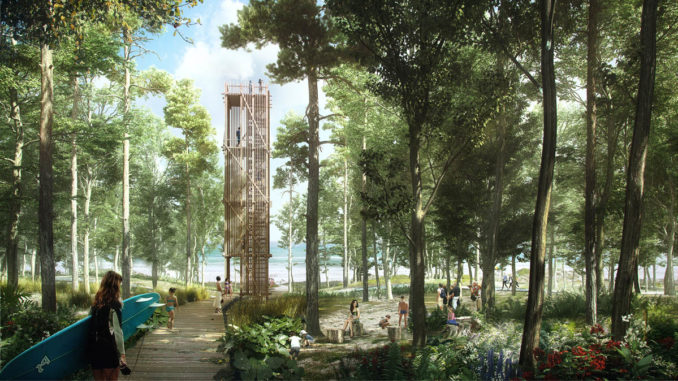
Prepare Adapt and Retreat
Xichong faces an ongoing threat from monsoons, storm surges, rainstorms, saltwater intrusion and other natural phenomena – it’s the first line of defence against the typhoons that batter Shenzhen from the southeast. Xichong will need to implement resilient and sustainable development, while sensitively integrating opportunities for tourism experiences. We propose to incorporate anti-disaster systems and infrastructure into the experience, for instance artificial protection reefs performing a dual function as a snorkelling opportunity, as we embrace natural challenges and transform them into opportunities.

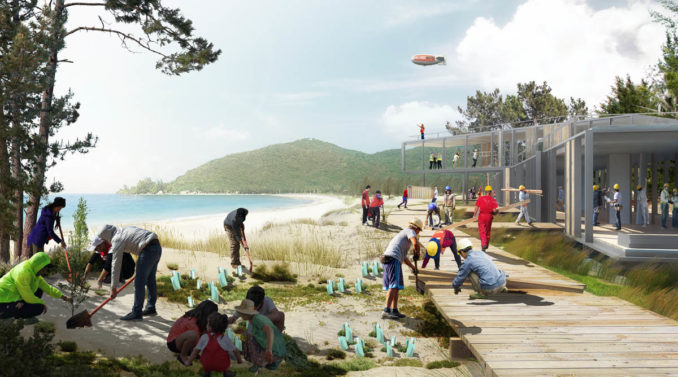
Experience the Lifestyle
Consumers would rather spend money on these experiences then on material possessions. As a rare natural destination close to Shenzhen, Xichong needs to utilize its distinct ecological scenery and historic communities to create a memorable and unique experience.


Nurtured by the Community
The local community will manage Xichong’s tourism experience and facilities to ensure they benefit from the industry directly. This model would be cyclical, with profits flowing to the community, who could reinvest into the ongoing management of the area as a world-class tourism destination. Activities show off local features and closely connect the visitors to the villages’ daily life and relaxed atmosphere. The nine existing villages will form a series of management co-operatives to manage the environment and tourism offerings in each area.
Xichong Coast Recovery Plan
Landscape Architect – Hassell
Consultants – Mott Macdonald
Client – Dapeng New Area Committee of Shenzhen Planning and Natural Resources Bureau
Image Credits: Hassell
